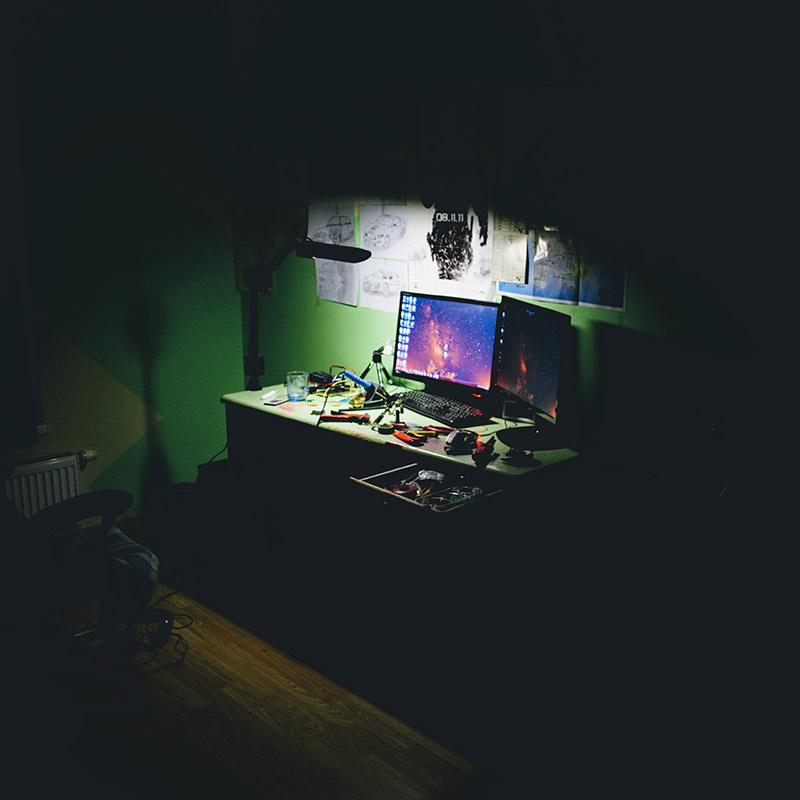By designing an individually limited space on an open platform, we have visually documented our own engagement with the topic of cyberculture. Visual means that we use images to illustrate thought processes, that we use a visual language to present our points of view. We set the focal points ourselves by compiling a selection of visual material that we have either found or created ourselves. By choosing a space on the internet for it, we create a context that is part of our approach to the subject. And by choosing the objects to be exhibited in this context, they take on a new meaning. Groys’ answer to the question “What is a work of art?” is: “The work of art is an object on display.” (Groys, 2008, p.2) The curator who selects the objects is the author of an exhibition of works written by others. Thus, the collection and presentation of objects in the exhibition is itself a work of art of multiple authorship.
New meanings are created by selecting and reassembling existing objects. The objects are referenced and re-contextualised.
For this to succeed, the collective or cultural origin of the objects as well as the authorship must remain recognizable so that the new exhibition or presentation does not turn out to be plagiarism.
Stalder (2018, p. 59) sees referentiality as a fundamental method of digital culture.
»Referentiality is a feature of many processes that encompass the operations of various genres of professional and everyday culture. In its essence, it is the use of materials that are already equipped with meaning – as opposed to so-called raw material – to create new meanings.«(ibid.)
Techniques of referentiality include re-mix, re-make, sampling, homage, quotation, etc., but it can also be a reuse of a material that involves a change of genre, such as in a parody or a meme (ibid. p. 60). We intercept the circulating digital cultural objects (Hand 2008) in order to include them in our repertoire or search specifically for the appropriate circulating objects so that they support the intended meaning. This is precisely the case in the gallery: existing material is brought in, referenced in a new context of an exhibition on the theme of cyberculture.
Education draws inspiration from this practice, also in response to the infinity of sources and references that one could consult in relation to a given subject. Gourlay (2012, p. 201) writes:
»As a result of the existence of online technologies, the lecturer now selects, interprets and synthesises from an almost infinite set of online and print sources, also available to the students.«
Through the practice of curation in digital culture, new context and new meaning is created, which in turn contributes to the further development of collective cultural memory. Thus, the net-like referencing of content, objects and authors, with which ever new connections can be revealed seems to constitute the essence of cyberculture. Using the example of the lecture, Gourlay summarizes that “the contemporary lecture could now be seen as a sliver, a subset, a commentary or a guide to a massive, distributed field of text ‘out there’ in an endless digital semiotic landscape.” The lecture thus becomes a complex verbal performance: “simultaneously one-voiced and multi-voiced, single-authored and inter-textual, verbal and written.” Or to use a more cyberlike quote (Poster 2006, cited in Hand 2008, p. 19): “Texts images and sounds now travel at the speed of electrons and may be altered at any point along their course. They are as fluid as water and simultaneously present everywhere.”
With the notion of curation the referencing and compilation of relevant content is now reflected in education and evokes new intertextual practices, as we have implemented with the gallery.

References
Gourlay, L. (2012) Cyborg ontologies and the lecturer’s voice: a posthuman reading of the ‘face-to-face’. Learning, Media and Technology Vol. 37, No. 2, June 2012, 198–211.
Groys, B. (2008) Multiple Authorship. Art Power. MIT Press.
Hand, M. (2008) Hardware to everyware: Narratives of promise and threat. from Hand, Martin, Making digital cultures : access, interactivity, and authenticity, pp.15-42, Aldershot: Ashgate
Rose, G. (2016). Chapter 2: Towards a critical visual methodology In Visual Methodologies: An Introduction to Researching with Visual Materials (pp. 24-47). London: Sage
Stalder, F. (2018) The Digital Condition, Polity Press, ProQuest Ebook Central, https://ebookcentral.proquest.com/lib/ed/detail.action?docID=5226121.